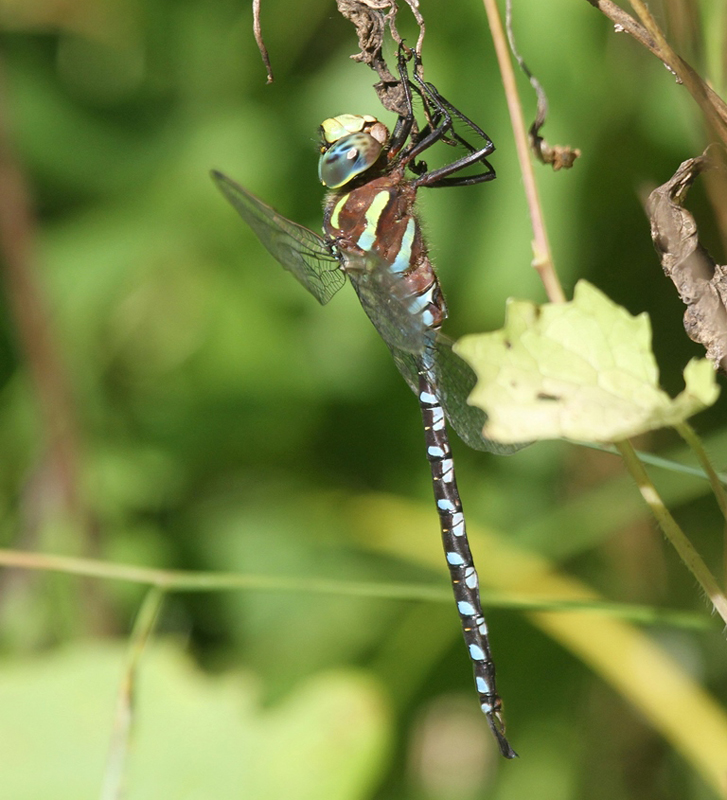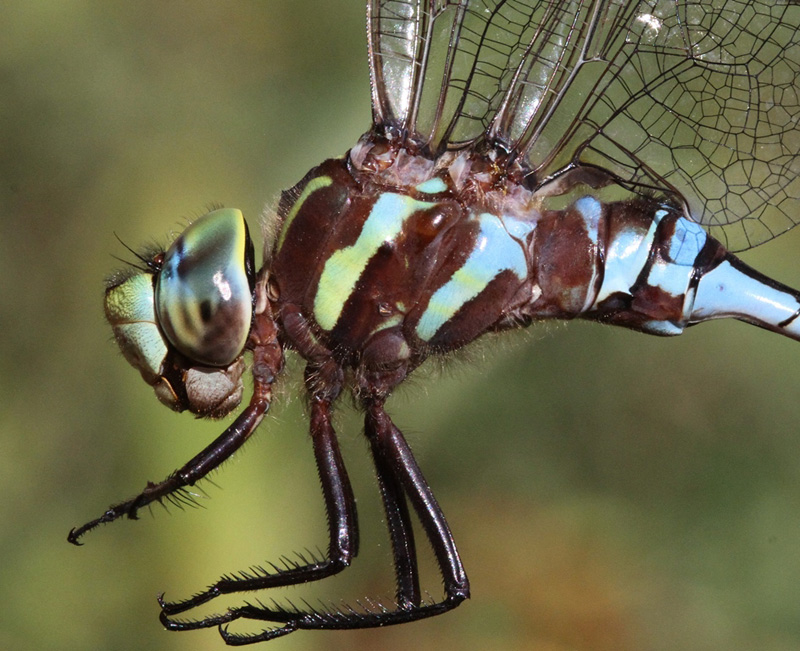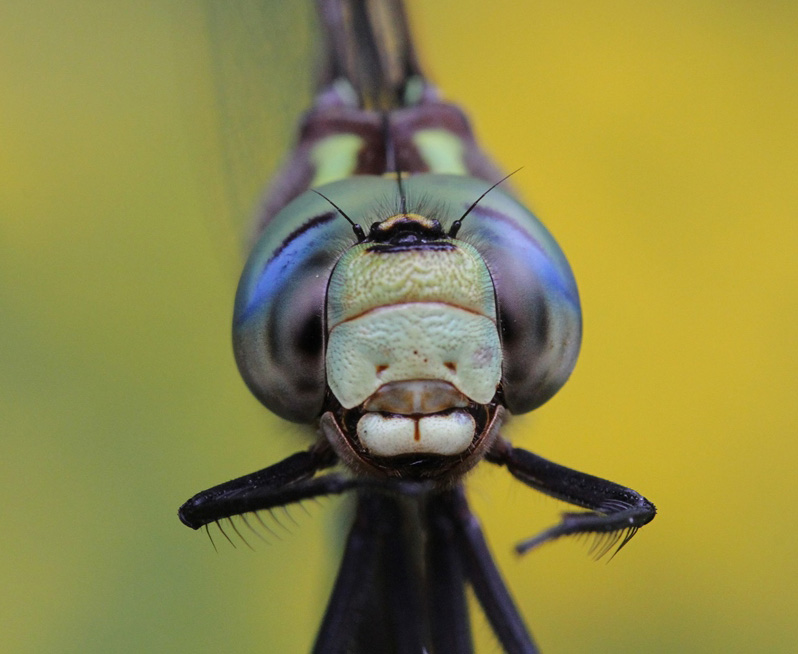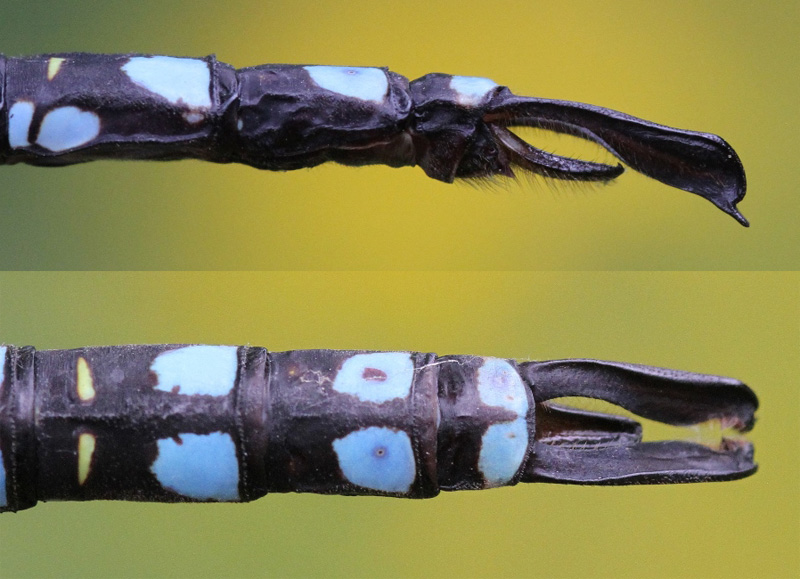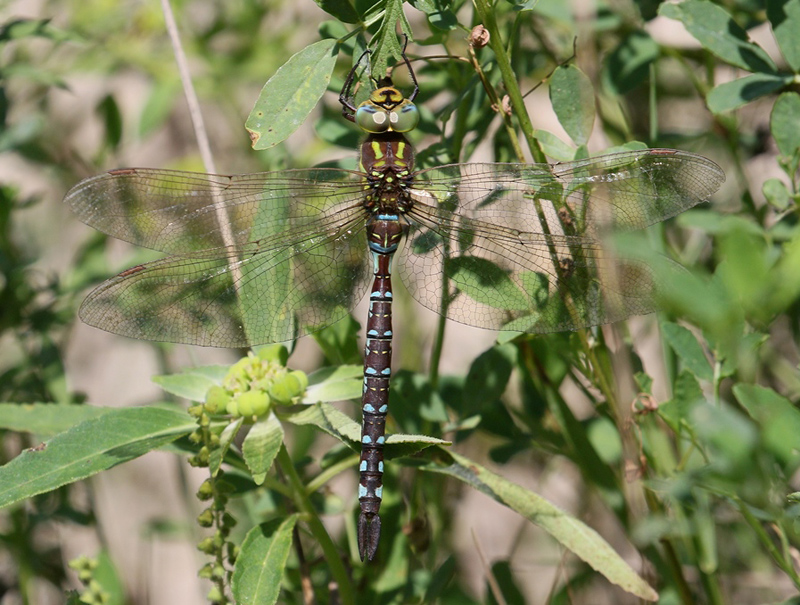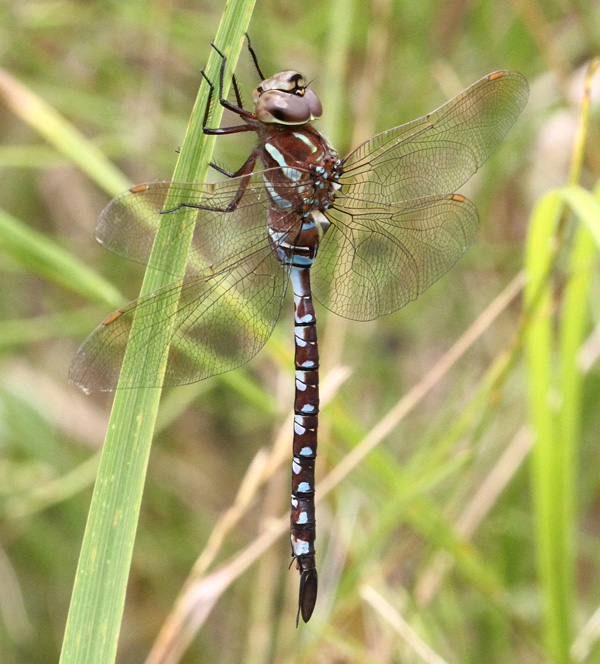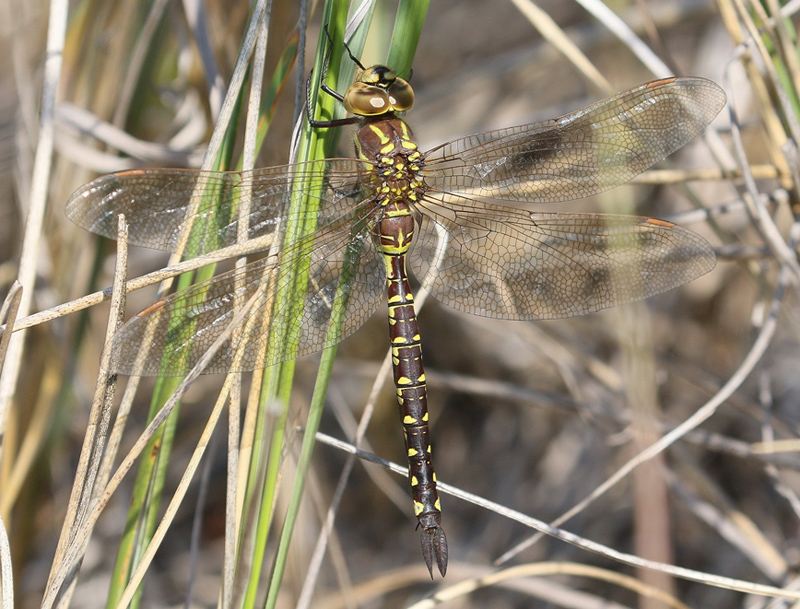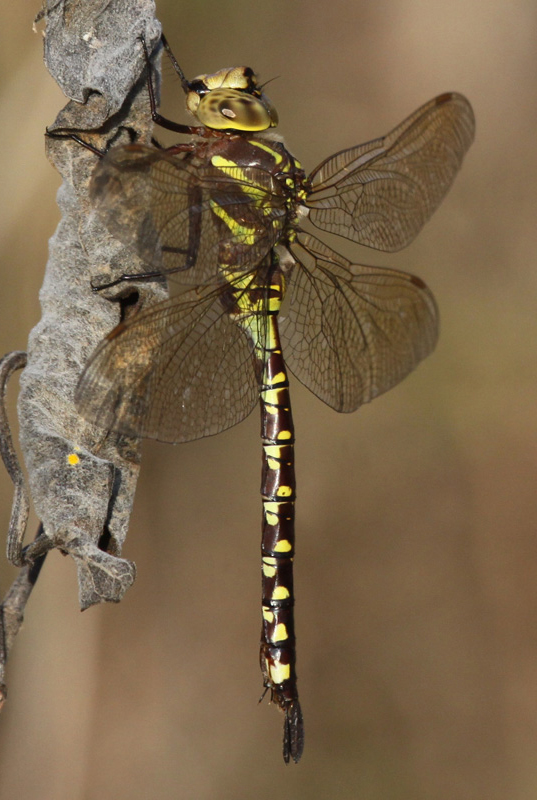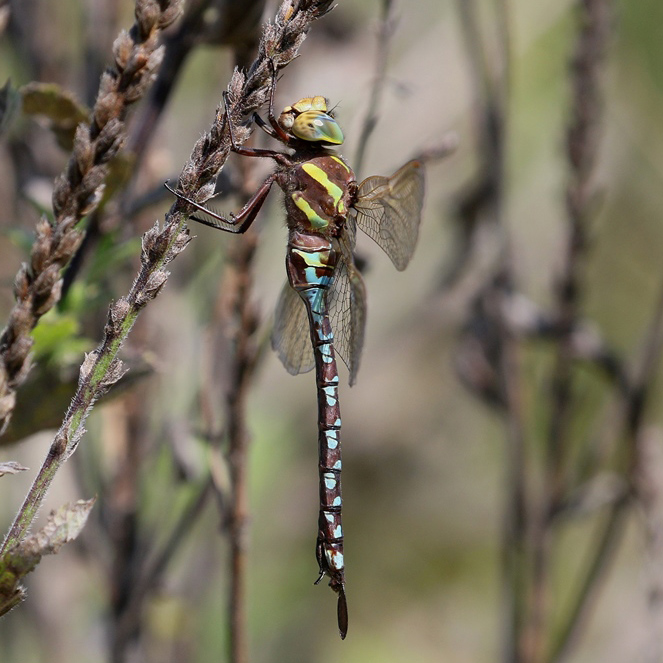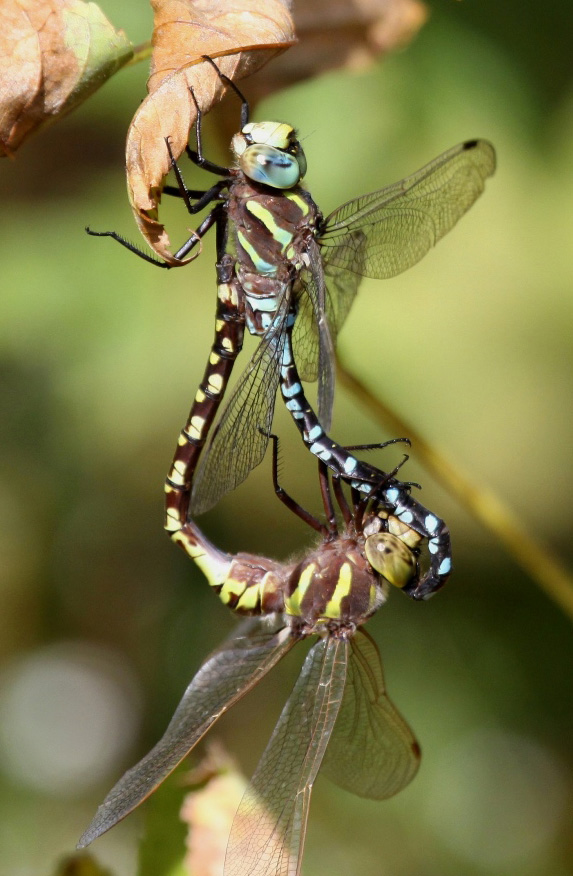




Aeshnidae, Darner Family
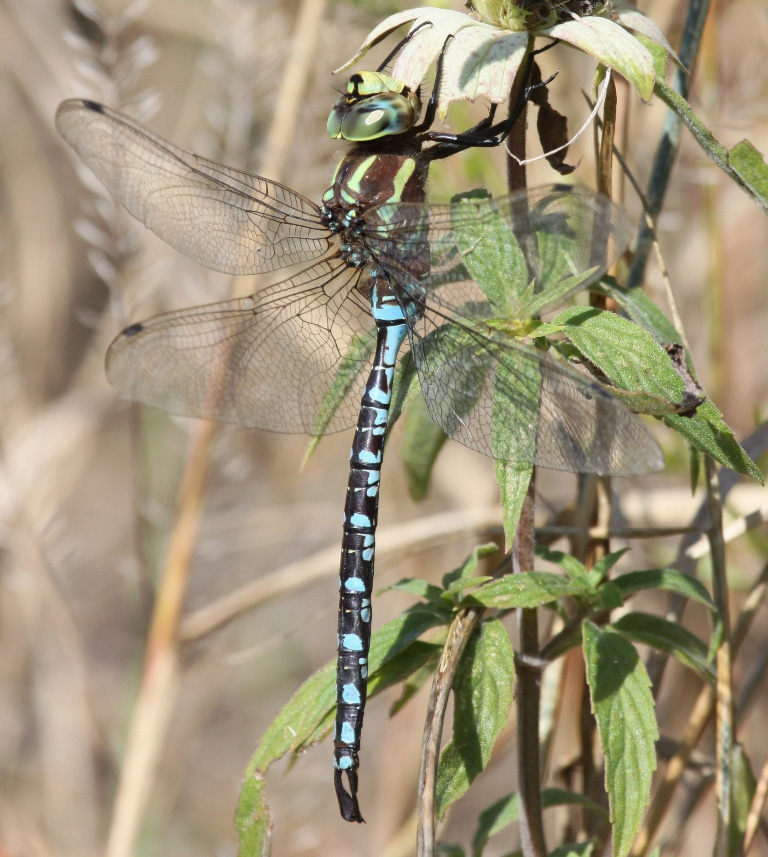
The mosaic darners of the genus Aeshna (aka blue darners) are large, strong-flying dragonflies with late-season flight periods. Most are similar to each other in size and general coloration, so in-hand examination is usually necessary to identify them. The most important distinguishing characteristics for this genus are the shapes and colors of the pale stripes on the sides of the thorax, especially the first or anterior stripes (here referred to as anterior thoracic side stripes [ATSS]), and the shapes of the cerci (upper pair of claspers) at the tip of the abdomen (whether paddle type or wedge type). Other marks that are often helpful include the presence/absence of a black line across the face, and the sizes of the pale spots on top of the abdominal segments (S), including the presence/absence of a spot on S10. Refer to the images of Aeshna species on the species pages of this website to compare shapes of thoracic side stripes and consult any dragonfly field guide for illustrations of the claspers (some guides are listed in the Resources Section).
Status-Global/State:
Distinguishing Characteristics:
The male is one of only two species of mosaic darner in Wisconsin with wedge-type claspers (shadow darner, which has much smaller spots on top of the abdomen, is the other). If claspers can't be seen, the shape of the anterior thoracic side stripes are slightly indented (notched) along their front edge, but not as deeply indented as with Canada, green-striped, or lake darners. The face is pale green without a cross stripe. For males, markings on top of the abdomen are large and blue. Females occur in three color variations: blue-form (rare), green-form, and yellow-form. The female's abdomen is more slender and constricted at the base than most female mosaic darners, and the ovipositor (and hence segment 9) is very long. Female's cerci are also unusually long. For females, the spots on top of the abdomen on segment 9 are nearly square and larger than those on the rest of the abdomen. Some females have a abdominal segment 10 that is entirely dark with no pale markings (similar to the black-tipped darner).
Description of Habitat/Range:
Wide ranging and fairly common in northern United States and southern Canada, this species prefers shallow marshy ponds and slow streams in open country, including small temporary ponds. Typical habitats often lack centrarchid fishes (primarily sunfishes [genus Lepomis] and black basses [genus Micropterus]). It is fairly common and widely distributed throughout Wisconsin. Joins other species of mosaic darners in feeding swarms over clearings at dusk.
Flight Season:
Early July to mid-October in Wisconsin.
(Click on photos to enlarge)
